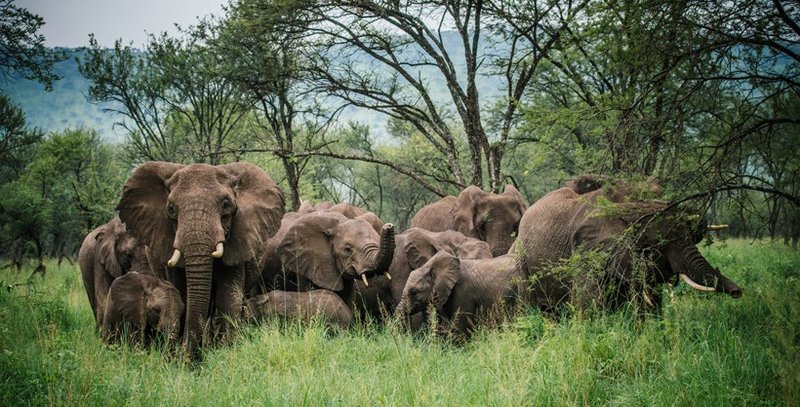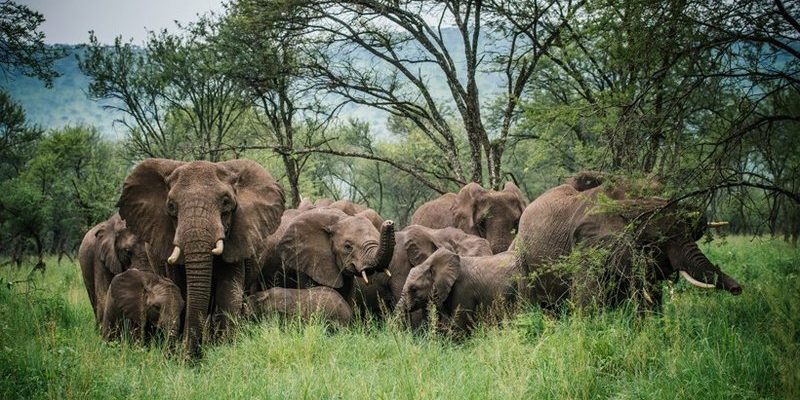
In this article, we’ll dive into how to handle an encounter with an African forest elephant. Whether you’re out on a thrilling wildlife adventure or simply curious about their behavior, knowing how to react in these moments can make all the difference for both you and the elephant. So, grab a cup of coffee, and let’s explore this captivating topic together!
Understanding African Forest Elephants
Before we jump into what to do when you encounter one, it’s important to understand the African forest elephant itself. These gentle giants are smaller than their savanna counterparts, usually standing about 8 to 10 feet tall and weighing between 5 and 15 tons. Their smaller size is matched by a unique appearance: they have straighter tusks and rounded ears that help keep them cool in the humid forest environment.
These elephants play a crucial role in their ecosystem. As they roam the forest, they help to disperse seeds, maintain the growth of vegetation, and even create pathways for other animals. Spotting one in the wild can be a rare and magical experience—but it’s also essential to approach such encounters with respect and caution.
Stay Calm and Assess the Situation
If you find yourself face-to-face with an African forest elephant, the first thing to do is stay calm. It’s easy to feel an adrenaline rush in such a moment, but panicking might lead to hasty decisions. Take a deep breath and assess the situation.
Are you close enough to the elephant to be in danger? Usually, these animals are curiously gentle, but they can be protective, especially if there are calves nearby. Look at its body language: if the elephant seems relaxed and is feeding or moving slowly, you’re likely safe. However, if it flares its ears, raises its trunk, or makes loud noises, that’s a clear sign to keep your distance.
Keep Your Distance
Respecting personal space is vital when encountering wild animals. Ideally, you should maintain a distance of at least 50 yards, or about half the length of a football field. This distance allows the elephant to feel secure, and it reduces the chance of an aggressive response.
Use binoculars or a camera with a zoom lens if you want to observe the elephant more closely. Not only does this keep you safe, but it also lets you appreciate the creature without intruding on its habitat. Remember, you’re a guest in their home, and it’s essential to act accordingly.
Do Not Approach or Feed the Elephant
It might be tempting to move closer for a better view or to attempt to feed the elephant, but that’s a big no-no! Approaching or attempting to feed these animals can put both you and the elephant in danger. They can be unpredictable, especially if they feel threatened or startled.
Feeding wild elephants can also encourage them to become reliant on human-provided food, which can disrupt their natural foraging behavior and lead to dangerous future interactions. So, if you’re ever tempted to whip out a snack, remember: it’s better to enjoy nature’s beauty from a safe distance!
Watch and Enjoy the Experience
If the elephant does not seem distressed and is going about its business, take a moment to simply watch and enjoy the experience. Observing wild animals in their natural habitat can be a profound moment. You might witness behaviors unique to their species, like using their trunk to forage for food or interact with other elephants.
Try to be as quiet as possible while enjoying the show. Speaking in hushed tones and minimizing movement will help ensure you don’t disturb the elephant. Plus, it allows you to absorb the beauty of the moment fully.
Know When to Leave
While it’s an incredible experience to spot an African forest elephant, it’s essential to know when to leave. If the elephant starts to show signs of agitation, such as trumpeting or charging, your best course of action is to back away slowly. Never turn your back on an elephant; instead, maintain eye contact as you retreat.
Making a quiet exit ensures you respect the elephant’s space and reduces the chance of a dangerous encounter. It’s also a good idea to inform any park rangers or guides about your sighting, especially if the elephant behaves unpredictably.
Encountering an African forest elephant in the wild can be one of the most awe-inspiring experiences of your life. By understanding the elephant’s behavior, staying calm, and respecting its space, you can enjoy this incredible moment without putting yourself or the animal at risk.
Wildlife encounters are a gift, offering us a glimpse into the beauty of nature and the importance of wildlife conservation. So next time you find yourself in the deep, green embrace of the jungle, remember these tips to make the most of your encounter with these magnificent giants. Enjoy your adventure, and be safe out there!

